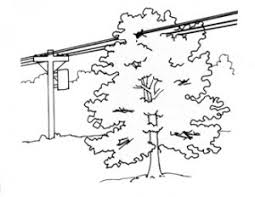OUTSIDE: Utility lines versus trees
Published 3:56 pm Friday, April 17, 2020
|
Getting your Trinity Audio player ready...
|
By Steve Roark
Volunteer Naturalist, Cumberland Gap National Historical Park
Utility Services are what makes our homes comfortable, providing electricity, water, sewage disposal, etc. It’s easy to forget that these services are provided through wires and pipes that are overhead or below ground. When trees are planted near these lines there could be trouble in the future, so think before you plant. Here are some things to consider.
Overhead lines: Trees look so small when you buy them that you can’t imagine them growing really big. But if you plant tall growing trees under or near overhead lines, they will ultimately have to be pruned regularly to provide clearance for the wires. This often causes the tree to have an unnatural appearance, plus continual pruning puts a lot of stress and wounding on the tree that can lead to decay, insect, or disease problems. Even worse, most utility and tree trimming companies simply top the tree because it’s a fast and simple limb removal technique. Tree topping is one of the worse things you can do to a tree, creating a lot of stress and ultimately shortening the tree’s life. So research the growing habits of your tree before you buy and select one that will fit the space it is planted in.
Underground lines: These are easily overlooked and need to be located before you plant. Accidentally digging into a utility line could cause personal injury or a costly service interruption. Believe me, I’ve done this twice. Never assume the lines are deeper than you’re digging. Also tree roots extend far beyond the branch spread above ground. Tree roots and underground lines can often coexist, but if the tree is near a line that must be dug up for repair, its roots could be badly damaged. Sewerage drain fields and tree roots are a bad combination; so don’t plant trees within 25’ of them.
Things to look for when selecting trees is average height and crown spread at maturity, which is normally found on the nursery label. If not, a little internet research will help you figure it out. This will give you something to measure out to see if it will fit the site you have in mind. There are lots of choices, so you should be able to find a tree that will work. A little research now can save a lot of aggravation later, so take the time.
Steve Roark is a contributing columnist for the Enterprise. His columns can be found under the “Lifestyle” tab on our website.





